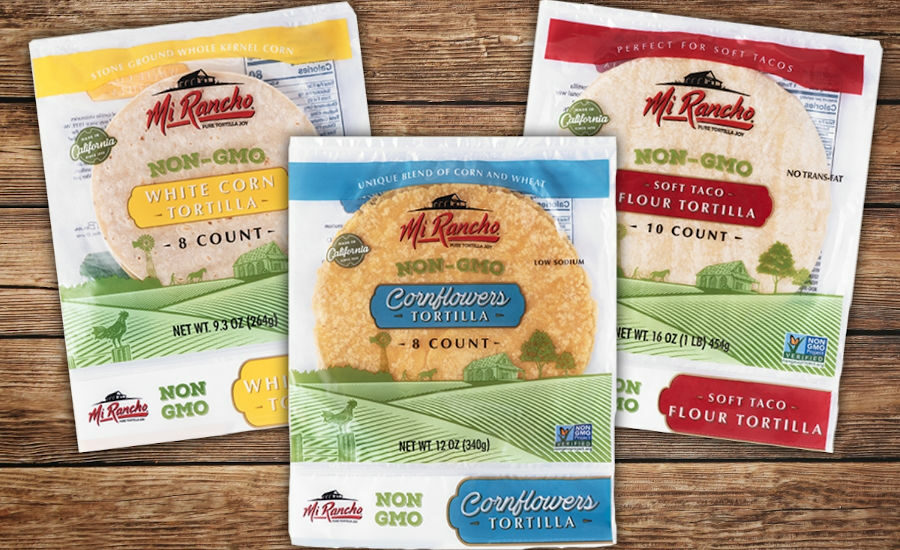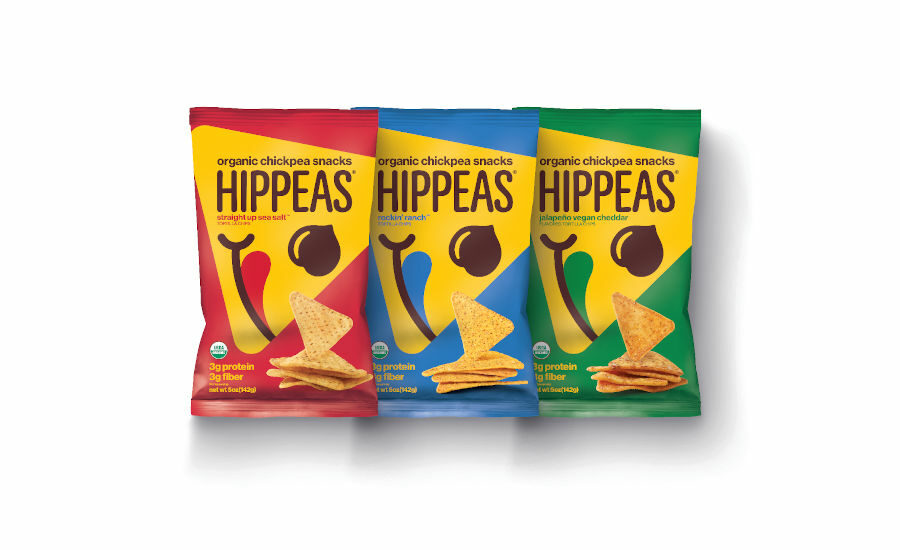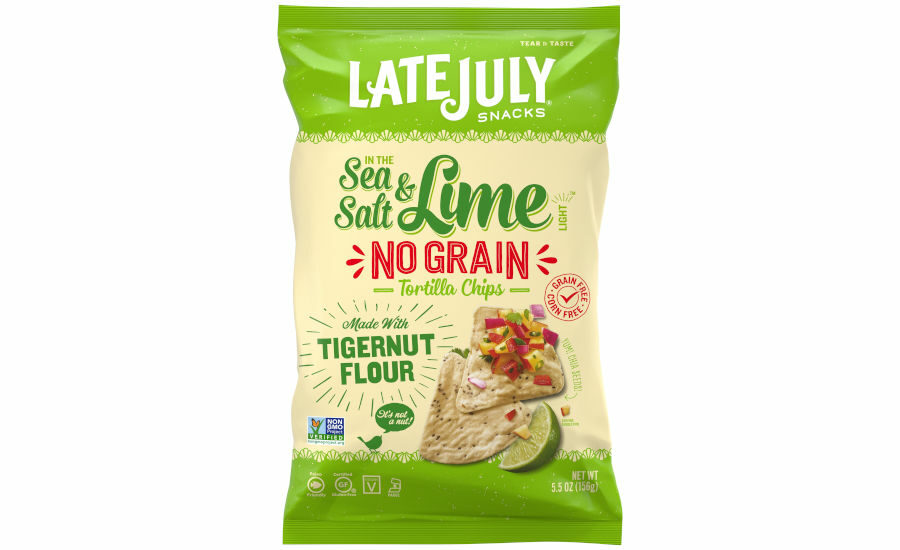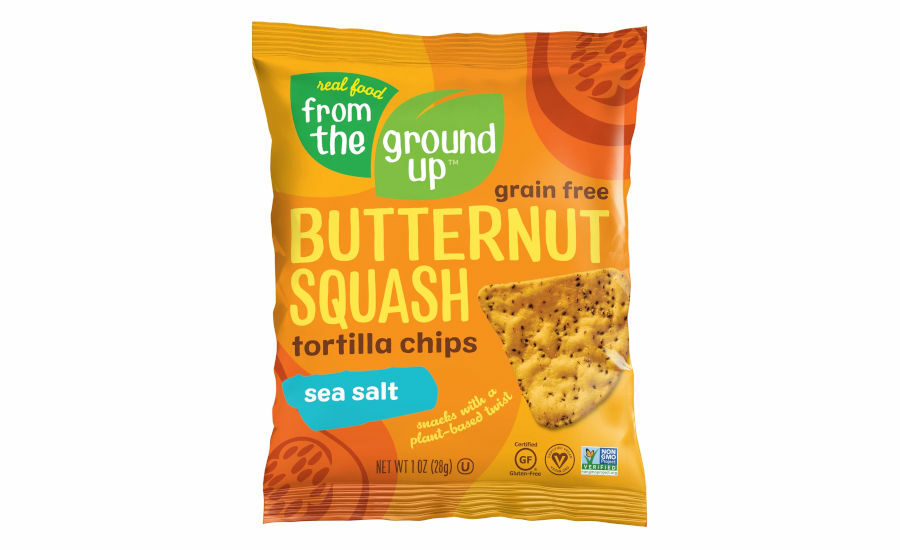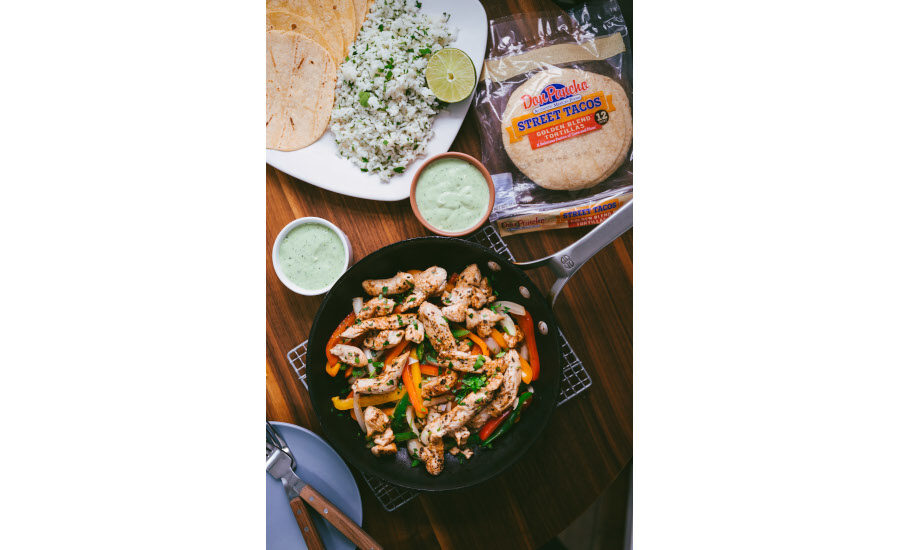The past several years have been kind to the tortilla market. Tortillas and tortilla chips are essentials across U.S. retail and foodservice sectors, with steady growth over the past several years.
According to IRI, Chicago and 2019 SF&WB State of the Industry analysis, the retail tortillas category is now valued at $2.6 billion, up from $2.3 billion in 2016. Tortilla chips have likewise seen steady growth, valued at $5.5 billion in 2019, up from $4.9 billion in 2016.
However, retail sales only represent a portion of the market presence of tortillas and tortilla chips in today’s U.S. market. According to the Tortilla Industry Association, Arlington, VA, a broader perspective on the market brings other channels into consideration:
| Market | Percentage | Sales |
| Retail | 48% | $8.3 billion |
| Foodservice | 24% | $4.2 billion |
| Schools, Institutional & Military | 21% | $3.6 billion |
| Other | 7% | $1.2 billion |
| TOTAL: | 100% | $17.3 billion |
Source: Tortilla Industry Association, 2020
Tortillas and tortilla chips see enduring appeal for a variety of reasons, including their inherent versatility, better-for-you product innovations that have broadened demographic relevance, and steadily increasing Latin American culinary influence across the U.S. Meanwhile, the supply chain continues to offer significant quality contributions.
Sponsored By:

Product diversification
“One of the top trends we are seeing in tortillas today is the desire for healthy deliverables,” says Anita Srivastava, Ph.D., CFS, senior technical service manager, bakery, Kemin Food Technologies, Des Moines, IA. “Many tortillas are being made with products such as whole wheat flour, plant proteins, flax seeds, and herb-based doughs such as spinach. We also see a demand for high-fiber tortillas.” Consumers are looking for cleaner ingredient statements that either contain fewer ingredients or no preservatives, she notes.
“Because of consumer perception of tortillas as healthier than bread, many have replaced their bread purchases with lower-carb, nutritionally fortified tortillas,” says Bill Hanes, vice president, marketing and strategy, Lesaffre Corp., Milwaukee, WI. “This means that tortillas are now considered staple products for many, alongside milk and eggs.”
This status ups the ante for clean label. “While the clean-label trend is prevalent across the industry, the expectation is even higher for staple products,” says Hanes.
Natural and clean-label ingredients continue to factor into trends, says Steve McIver, tortilla and flat bread specialist, Brolite Products, Bartlett, IL. “We’re seeing more inclusion of grains and seeds into tortilla products. Unique flavors have also been introduced, giving the tortilla a new taste—and sometimes even a new color. Tortillas designed to fit specific diets are also trending, especially low-carb, high-fiber, and low-calorie.”
Consumers seek tortillas because they perceive them as healthier than bread, notes Mark Stavro, senior director of marketing, Bunge Loders Croklaan, Chesterfield, MO, so functional and nutritional ingredients are trending. “However, consumers are also increasingly interested in bold and unique flavors. Tortilla manufacturers must learn to balance these two trends.”
Mel Festejo, COO, American Key Food Products, Closter, NJ, sees the emergence of grain-free, Paleo-friendly tortillas and tortilla chips as an important trend in today’s market. “This is enabled by the availability of a best-fit ingredient: premium cassava flour. The use of cassava flour in grain-free tortillas and chips also allow for very simple formulations with short ingredient lists.”
The Maria and Ricardo’s brand released a line of grain-free Veggie Tortillas in 2019 made with cassava flour and vegetables like sweet potato, zucchini, and cauliflower. The products provide either one half or one full serving of vegetables per tortilla.
“One top trend we see is consumers using tortillas as a ‘transporter of foods,’” says Ricardo Baez, president, Don Pancho Authentic Mexican Foods, Salem, OR, a Reser’s Fine Foods business. “We continue to see boundaries shattered by the different ways that a tortilla can be used to eat and enjoy foods from around the world.”
Foodservice is trending toward street tacos, notes Baez. “We also see operators focused on menu items that help with portion control.”
Ingredient and flavor trends include a continued push toward organic and non-GMO ingredients, as well as demand for grain-free and exotic flavor blends, notes Baez.
In 2019, Mi Rancho launched a new line of Non-GMO Tortillas that prominently features the Non-GMO Project butterfly seal on product packaging.
“The ‘better-for-you’ movement is huge and continues to directly impact the buying habits of consumers,” says Baez. “For tortillas, we are seeing those following the keto diet asking for our low-carb tortillas.” Health-conscious shoppers also look for organic, gluten-free, healthy-grain options, like those using whole wheat or ancient grains.
Hippeas extended its reach into the snack market in early 2020 with the launch of its gluten-free Organic Chickpea Hippeas tortilla chips, made with chickpea flour, corn flour, and pea protein.
Also, in 2019, Late July Snacks, a Campbell Soup Co. brand, launched its No Grain tortilla chips, made with organic ground tigernut flour, cassava flour, and chia seeds.
“Nut-based ‘flours’ are blended into tortilla formulations to increase nutritional value, especially for higher protein and fiber content,” says Festejo.
“With today’s consumers more on-the-go than ever, snacking occasions continue to rapidly rise,” says says Mohammad Emami, senior product manager, Bartek Ingredients, Stoney Creek, Ontario. This opens up opportunities for tortilla chips well beyond mealtimes. “In addition, a greater variety of ‘ethnic’ flavors are entering the mainstream market at an accelerated pace. This has driven flavor and product innovation in the tortilla space with unique, and even ‘extreme,’ flavors filling aisles rapidly.”
In one example, Taco Bell brought a Reaper Ranch retail product to market in 2019 that features a Carolina reaper chile flavor.
Alejandro Perez-Gonzalez, bakery applications formulator, Bartek Ingredients, notes that malic and fumaric acid can help intensify both traditional and new flavors, making them even more effective for processors and memorable tasting-experience for consumers.
Sponsored By:

Functional considerations
In order to gain a competitive edge, tortilla product R&D often focuses on strategic improvements. “The inclusion of enzymes in tortilla formulations has allowed manufacturers to achieve improved quality in their tortillas, allowing for increased shelf life, as well,” says Srivastava.
Specialty tortilla products are commanding more attention from increasingly attentive consumers, with interest in simplified labels. “Removing some of the traditional preservatives and using clean and organic ingredients are important to a consumer focused on better-for-you products,” says McIver.
“Like many bakery items, good-quality flour tortillas with an extended shelf life depend on a careful balance of multiple ingredient and process interactions to achieve optimum characteristics,” says Hanes. “Balancing all these qualities while achieving a clean label presents a major challenge to today’s bakery formulator. To support tortilla makers in this challenge, Lesaffre offers Encore Plus technology to improve extensibility while maintaining a clean label.”
To obtain the appropriate dough rheology and pressing performance without shrink-back, tortilla makers traditionally use reducing agents like L-cysteine or sodium metabisulfite, says Hanes. “However, consumers don’t understand the need for these ingredients and don’t appreciate seeing their long, technical names on a label.” Clean-label ingredients such as dried yeast and enzymes can create an optimized system that mimics the reducing effect of traditional agents, he notes, citing comparative trials illustrating their impact on increasing the diameter of finished tortillas.
“Encore can also extend the shelf life of tortillas,” continues Hanes. Rollability tests conducted over the shelf life of tortillas in Lesaffre’s East Coast Baking Center showed a marked improvement in the tortillas using Encore versus the controls without ESL systems, he says.
“When you think of the quality of tortillas, they need to be flexible, roll up easily without cracking or ripping, and have a round and even shape,” says Ricardo Rodriguez, marketing manager, confectionery and bakery, Ingredion Incorporated, Westchester, IL. “The texture, which is important, needs to be somewhat elastic but not rubbery, layered, and slightly moist, without being tacky.” Tortilla producers can choose from a wide range of hydrocolloids or pre-gel starches from various bases to use as co-texturizers, he notes, which can be used to provide upfront batter/dough viscosity, stabilize crumb cell structure, provide freeze/thaw stability, and reduce water mobility.
Strategic functionality comes to the fore with the addition of better-for-you ingredients. According to proprietary Ingredion research, 63 percent of consumers believe plant-based foods provide benefits, says Rodriguez.
“We’re starting to see the use of alternative plant proteins/veggies, including pulse-based ingredients, show up in tortilla chips,” says Srivastava.
In early 2020, REAL FOOD FROM THE GROUND UP introduced grain-free Butternut Squash Sea Salt Tortilla Chips.
“Customizing the eating experience for consumers can be done by creating preferred textures,” says Rodriguez. “In a recent proprietary study that Ingredion conducted with consumers, 79 percent picked crispiness as the top textural attribute for tortilla chips, with crunchiness coming in a close second at 72 percent. In the same study, 54 percent of consumers preferred a thinner tortilla chip.” Tortilla chip producers can create new, differentiated textures and eating experiences by formulating with the right texturizer, he notes.
“The ingredients tortilla makers use play a big role in the quality of the finished product,” says Stavro. Bunge Loders Croklaan offers a tortilla-specific Vream shortening that improves rollability—reducing tears—to yield very soft tortillas. “Vream soy and high-stability soy shortenings were developed to help manufacturers create a better sensory experience and promote ease-of-use during production,” he says.
“Solutions that help with formulations, including the use of organic acids such as fumaric and malic acid, are an integral part of the base product,” says Perez-Gonzalez. “These formulations optimize both quality and shelf life, and assist in creating well-rounded flavored products.” Fumaric acid plays a role in achieving good leavening, including a desirable “puffy” cell structure, he notes, as well as a mold-free, shelf-stable, product. “In addition, fumaric acid optimizes the action of preservatives, including traditional ones, such as calcium propionate, and the newer clean-label ones, such as fermented or cultured preservatives.”
Equipment also factors into tortilla product functionality. In order to gain a competitive edge, tortilla product developers continue to look for methods of streamlining production while improving quality.
Ken Schwenger, president, Bakery Concepts International, Enola, PA, notes that Rapidojet technology provides for instant and continuous mixing of masa for items like tortilla chips, wraps, etc. He relates that Rapidojet customers are seeing benefits like 90 percent less mixing energy, 80 percent less labor due to the elimination of batch mixing, an increase in masa hydration level of up to 35 percent without functionally compromising the dough, standardized product consistency, no lost batches due to scaling errors, and more.
Schwenger points out that the technology can help snack and bakery companies meet corporate goals related to innovation, sustainability, and quality, with rapid ROI, leading to a healthier bottom line.
Tortilla products will likely continue a strong pattern of growth. “Retailers and foodservice operators can create more strategic revenue opportunities by promoting tortillas and tortilla chips as healthy and flavorful options for consumers,” says Srivastava. “Tortillas are an easy, ready-to-eat product that consumers can quickly grab and make a quick wrap, for example. Tortilla chips can often be a healthier snack alternative to other types of chips on the market.”
Srivastava suggests high-visibility bakery aisle merchandising of tortilla products. “As they are often good alternatives for bread, by placing tortillas in the bakery aisle instead of a separate location, consumers will be more likely to grab a tortilla when seeking out alternative options. Finally, retailers and foodservice operators can work together to create more creative menu ideas that appeal to various nutritional programs—such as low carb or high-fiber—and are kid-friendly.”
Sponsored By:

